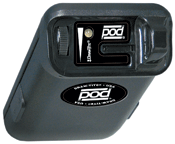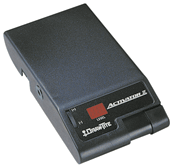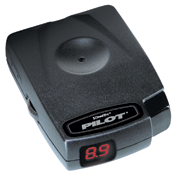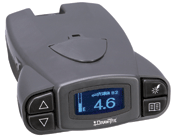Hitch Products
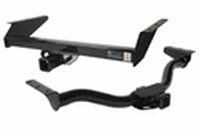
Hitch, Truck Hitch, Trailer Hitch, Tow Hitch, Receiver Hitch... Whatever you call it, the Hitch is the mechanism that is typically mounted to the rear of a vehicle under the bumper. There are five classes of Hitches for towing trailers. Each class is designed for a specific trailer weight range. When selecting the appropriate hitch make sure the weight rating of the hitch is greater than the loaded weight of the trailer that will be towed. The tow vehicle capacity for weight carrying and hitch attachment will vary and will sometimes dictate the class of hitch that can be used. Our extensive inventory is composed of products from the best manufacturers in the industry .Naples ATV also carries a full line of towing supplies, including adjustable ball mounts, pintle mounts, ball mount and couple locks, Brake Controllers and much more. As added incentives, our skilled technicians service what we sell, and when you choose our services you will deal directly with the owner. Contact us today for availability and special orders.
•Ball Mounts
•Brake Controls
•Bike Carriers
•Cargo Carriers
•Connectors
•Coupler Locks
•Extensions & Adapters
•Fifth Wheel
•Gooseneck
•Harnesses
•Hitch Balls
•Hitch Locks
•Hitch Plugs
•Hitch Steps
•Hitch lights
•Pins & Clips
•Pintle Hooks
•Specialty Ball Mounts
•Tie Downs
•Tow Bars
•Towing Mirrors
•Tow Straps
•Transmission Coolers
•Turnover Ball
Gooseneck Hitch
•Brake Controls
•Bike Carriers
•Cargo Carriers
•Connectors
•Coupler Locks
•Extensions & Adapters
•Fifth Wheel
•Gooseneck
•Harnesses
•Hitch Balls
•Hitch Locks
•Hitch Plugs
•Hitch Steps
•Hitch lights
•Pins & Clips
•Pintle Hooks
•Specialty Ball Mounts
•Tie Downs
•Tow Bars
•Towing Mirrors
•Tow Straps
•Transmission Coolers
•Turnover Ball
Gooseneck Hitch
Class I hitches are weight carrying (WC) hitches rated up to 2000 lbs. gross trailer weight (GTW) with a maximum trailer tongue weight (TW) of 200 lbs. The use of a drawbar and hitch ball of the same rating or higher is required. Some hitches in this class may attach to the vehicle bumper or trunk pan. Most other Class I hitches attach to the vehicle frame. Always consult your owner's manual for vehicle rating
Class II hitches are weight carrying (WC) hitches rated up to 3500 lbs. gross trailer weight (GTW) with a maximum trailer tongue weight (TW) of 300 lbs. The use of a drawbar and hitch ball of the same rating or higher is required. Class II hitches normally attach to the vehicle frame and or bumper. Always consult your owner's manual for vehicle rating.
Class III hitches are weight carrying (WC) and also are weight distributing (WD) hitches depending on the vehicle and hitch specifications. Not all Class III hitches are rated to be both. The hitch specifications will alert you to a hitch that is not weight distributing. Class III hitches used as weight carrying is rated up to 5000 lbs. gross trailer weight (GTW) with a maximum trailer tongue weight (TW) of 500 lbs. Hitches that are used for weight distributing are rated up to 10,000 lbs. gross trailer weight (GTW) with a maximum trailer tongue weight (TW) of 1000 lbs. The use of a ball mount and hitch ball of the same rating or higher is required. To use the weight distribution side of the hitch a weight distribution system is required. Class III hitches attach to the vehicle frame only. Always consult your owner's manual for vehicle rating
Class IV hitches is very similar to Class III hitches except for the weight ratings. Class IV hitches are weight carrying (WC) and weight distributing (WD) hitches depending on the vehicle and hitch specifications. Not all Class IV hitches are rated to be both. The hitch specifications will alert you to a hitch that is not weight distributing. Class IV hitches used as weight carrying is rated up to 12,000 lbs. gross trailer weight (GTW) with a maximum trailer tongue weight (TW) of 1200 lbs. Hitches that are used for weight distributing are rated up to 15,000 lbs. gross trailer weight (GTW) with a maximum trailer tongue weight (TW) of 1500 lbs. The use of a ball mount and hitch ball of the same rating or higher is required for weight carrying. To use the weight distribution side of the hitch a weight distribution system is required. Class IV hitches attach to the vehicle frame only. Always consult your owner's manual for vehicle rating.
Class V hitches is very similar to Class III & IV hitches except for the weight ratings and that the hitch uses a 2-1/2" receiver. Class V hitches are weight carrying (WC) and weight distributing (WD) hitches. Class V hitches used as weight carrying is rated up to 13,000 lbs. gross trailer weight (GTW) with a maximum trailer tongue weight (TW) of 1300 lbs. Hitches that are used for weight distributing are rated up to 17,000 lbs. gross trailer weight (GTW) with a maximum trailer tongue weight (TW) of 1700 lbs. The use of a ball mount and hitch ball of the same rating or higher is required. To use the weight distribution side of the hitch a weight distribution system is required. Class V hitches attach to the vehicle frame only. Always consult your owner's manual for vehicle rating.
Class II hitches are weight carrying (WC) hitches rated up to 3500 lbs. gross trailer weight (GTW) with a maximum trailer tongue weight (TW) of 300 lbs. The use of a drawbar and hitch ball of the same rating or higher is required. Class II hitches normally attach to the vehicle frame and or bumper. Always consult your owner's manual for vehicle rating.
Class III hitches are weight carrying (WC) and also are weight distributing (WD) hitches depending on the vehicle and hitch specifications. Not all Class III hitches are rated to be both. The hitch specifications will alert you to a hitch that is not weight distributing. Class III hitches used as weight carrying is rated up to 5000 lbs. gross trailer weight (GTW) with a maximum trailer tongue weight (TW) of 500 lbs. Hitches that are used for weight distributing are rated up to 10,000 lbs. gross trailer weight (GTW) with a maximum trailer tongue weight (TW) of 1000 lbs. The use of a ball mount and hitch ball of the same rating or higher is required. To use the weight distribution side of the hitch a weight distribution system is required. Class III hitches attach to the vehicle frame only. Always consult your owner's manual for vehicle rating
Class IV hitches is very similar to Class III hitches except for the weight ratings. Class IV hitches are weight carrying (WC) and weight distributing (WD) hitches depending on the vehicle and hitch specifications. Not all Class IV hitches are rated to be both. The hitch specifications will alert you to a hitch that is not weight distributing. Class IV hitches used as weight carrying is rated up to 12,000 lbs. gross trailer weight (GTW) with a maximum trailer tongue weight (TW) of 1200 lbs. Hitches that are used for weight distributing are rated up to 15,000 lbs. gross trailer weight (GTW) with a maximum trailer tongue weight (TW) of 1500 lbs. The use of a ball mount and hitch ball of the same rating or higher is required for weight carrying. To use the weight distribution side of the hitch a weight distribution system is required. Class IV hitches attach to the vehicle frame only. Always consult your owner's manual for vehicle rating.
Class V hitches is very similar to Class III & IV hitches except for the weight ratings and that the hitch uses a 2-1/2" receiver. Class V hitches are weight carrying (WC) and weight distributing (WD) hitches. Class V hitches used as weight carrying is rated up to 13,000 lbs. gross trailer weight (GTW) with a maximum trailer tongue weight (TW) of 1300 lbs. Hitches that are used for weight distributing are rated up to 17,000 lbs. gross trailer weight (GTW) with a maximum trailer tongue weight (TW) of 1700 lbs. The use of a ball mount and hitch ball of the same rating or higher is required. To use the weight distribution side of the hitch a weight distribution system is required. Class V hitches attach to the vehicle frame only. Always consult your owner's manual for vehicle rating.
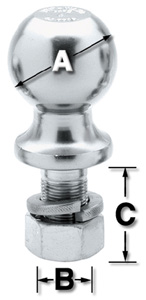
For example, a 3,500 lb. ball on a 2,000 lb. max trailer weight rated hitch does not increase your towing capacity to 3,500 lbs. Your hitching system is still rated at 2,000 lbs. Conversely, a 2,000 lb. ball on a 3,500 lb. max trailer weight-rated hitch decreases your maximum towing capacity to 2,000 lbs. The hitch ball diameter (A) must be the same diameter as the trailer coupler (1-7/8”, 2”, or 2-5/16”).
The shank diameter (B) of the hitch ball should be the same as the hole diameter in the (correct) ball mount you selected. The shank length (C) should be long enough to allow at least two threads to be visible when the hitch ball is installed and the nut completely tightened
The shank diameter (B) of the hitch ball should be the same as the hole diameter in the (correct) ball mount you selected. The shank length (C) should be long enough to allow at least two threads to be visible when the hitch ball is installed and the nut completely tightened
5th Wheel and Gooseneck Hitches
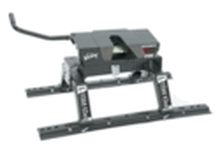
We have everything you need to haul your heavy-duty recreational trailer, livestock trailer or farm equipment, including a wide selection of fifth wheel and gooseneck hitches by Reese and Draw- Tite rated from 15,000 to 30,000 lbs. We also have hitch accessories and louvered tailgates for your pick-up.
Gooseneck Hitch
A gooseneck hitch is designed for use in a pickup truck similar to a Fifth Wheel. The difference is that the gooseneck uses a ball and coupler verse a kingpin and pin receiver. Typically, the trailers that are most commonly used for this type of gooseneck hitch is a horse trailer. Gooseneck hitches are offered in a few types of configurations, they are designed to be mounted above or below the trucks pickup bed. Either design (above or below) allows for minimal obstruction when the ball is not in the towing position.
Fifth Wheel Hitches
A fifth wheel is a specially designed hitch with a king pin receiver that mounts over or forward of the rear axle of the vehicle. The hitch connects with the king pin on the fifth wheel trailer. Fifth wheel hitches are easy to operate and require little maintenance.
Brake Controllers
Brake controls are designed to apply the brakes of the towed vehicle (trailer). There are three types of brake controls on the market today timed, inertia, and proportional. Another type of braking system that is used for trailers is a breakaway kit.
|
LED indicator light lets you know there is a good connection between vehicle and trailer. Also, a manual override switch lets you apply brakes in emergency situations
Draw-Tite 5500 Activator II Brake Controller for 1 to 4 Axle Trailers
|
Digital Numeric indicator light lets you know there is a good connection between vehicle and trailer. Also, a manual override switch lets you apply brakes in emergency situations
The super sleek and modern design of the Prodigy stands out among all brake controllers. Tekonsha has made installing and using this brake controller simple and easy.
|
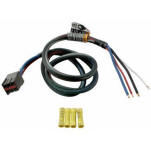
Universal Brake Control Wiring Adapter for Pre-Wired Ford, GM, Dodge, Toyota, Nissan
